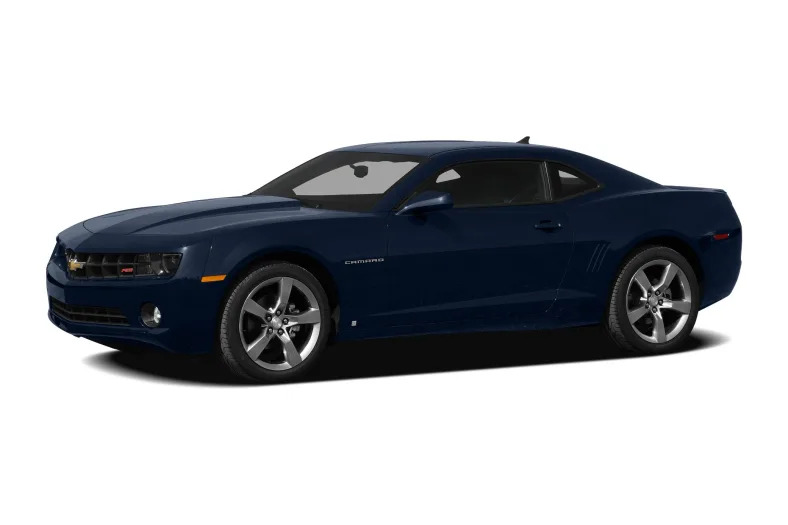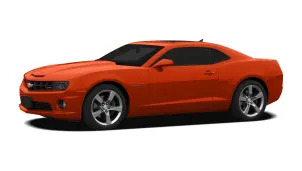2010 Chevrolet Camaro
2010 Chevy Camaro – Click above for high-res image gallery Like Bumblebee on his interstellar voyage from Cybertron, the 2010 Chevrolet Camaro has taken years to arrive. If we take the Transformers analogy further (bear with us), the Camaro has landed after a few Decepticons – the Dodge Challenger, Ford Mustang and Nissan 370Z – have already begun staking out territories. More than the others, the Camaro has to justify its place in the battle, while at the same time backing up three years of unrelenting hype. Follow the jump to find out if Chevrolet has brought the required weaponry to fight to the death for muscle car supremacy. %Gallery-48350% All photos Copyright ©2009 Jonathon Ramsey / Weblogs, Inc. Like every other gearhead on planet Earth, we've been champing at the bit for the Camaro to arrive in production guise since its debut as a concept in 2006. Furthermore, when we made our way to San Diego for some long-awaited wheel time, we hoped beyond hope that its achingly attractive exterior would be backed by a chassis and drivetrain primed for global domination. We didn't need the Camaro to turn into a Rock 'Em Sock 'Em Robot, but gut-rocking thrills were the minimum standard. Walk up to the Camaro, and it's a spitting image of the coupe we've seen in a variety of forms for the past 1,100 days. It's big, it hunkers and it's angry – or at least perturbed. Built on a modified Zeta platform that underpins the Pontiac G8, the changes to the Camaro versus its sedan sibling include tweaks to accept larger wheels, a shorter wheelbase thanks to the rear wheels moving farther forward by about three inches, the base of the A-pillar was pushed back and lowered, and the front strut tower height was dropped to allow for a lower hood line. Regarding its stance, the car has been designed to maintain the same tire-to-fender gap regardless of tire size: three fingers in front, four fingers in back. And while the massive face of the car appears to present various expanses of uninterrupted surface, take a closer look and you'll notice that a substantial amount of detail work has gone into its fascia. The "trap hood", which means it's fully enclosed by body panels, features a negative angle along its sides where it meets the fenders. The windshield washer nozzles are hidden under the rear edge of the hood for an uninterrupted line. The reverse mohawk in the roof is meant to tie the car to the twin-cockpit silhouette of the Corvette. The side mirrors conform to legal standards, yet remain true to those on the concept. There are subtle crisp lines that tie the roof and C-pillar into the rear, and the deck features a diagonal cut line that gives the trunk a unique profile when raised. Get in the car, and the Camaro's size asserts itself: it's dark inside. The high beltline, low roof and black interior don't let bundles of excess …
Full Review
2010 Chevy Camaro – Click above for high-res image gallery Like Bumblebee on his interstellar voyage from Cybertron, the 2010 Chevrolet Camaro has taken years to arrive. If we take the Transformers analogy further (bear with us), the Camaro has landed after a few Decepticons – the Dodge Challenger, Ford Mustang and Nissan 370Z – have already begun staking out territories. More than the others, the Camaro has to justify its place in the battle, while at the same time backing up three years of unrelenting hype. Follow the jump to find out if Chevrolet has brought the required weaponry to fight to the death for muscle car supremacy. %Gallery-48350% All photos Copyright ©2009 Jonathon Ramsey / Weblogs, Inc. Like every other gearhead on planet Earth, we've been champing at the bit for the Camaro to arrive in production guise since its debut as a concept in 2006. Furthermore, when we made our way to San Diego for some long-awaited wheel time, we hoped beyond hope that its achingly attractive exterior would be backed by a chassis and drivetrain primed for global domination. We didn't need the Camaro to turn into a Rock 'Em Sock 'Em Robot, but gut-rocking thrills were the minimum standard. Walk up to the Camaro, and it's a spitting image of the coupe we've seen in a variety of forms for the past 1,100 days. It's big, it hunkers and it's angry – or at least perturbed. Built on a modified Zeta platform that underpins the Pontiac G8, the changes to the Camaro versus its sedan sibling include tweaks to accept larger wheels, a shorter wheelbase thanks to the rear wheels moving farther forward by about three inches, the base of the A-pillar was pushed back and lowered, and the front strut tower height was dropped to allow for a lower hood line. Regarding its stance, the car has been designed to maintain the same tire-to-fender gap regardless of tire size: three fingers in front, four fingers in back. And while the massive face of the car appears to present various expanses of uninterrupted surface, take a closer look and you'll notice that a substantial amount of detail work has gone into its fascia. The "trap hood", which means it's fully enclosed by body panels, features a negative angle along its sides where it meets the fenders. The windshield washer nozzles are hidden under the rear edge of the hood for an uninterrupted line. The reverse mohawk in the roof is meant to tie the car to the twin-cockpit silhouette of the Corvette. The side mirrors conform to legal standards, yet remain true to those on the concept. There are subtle crisp lines that tie the roof and C-pillar into the rear, and the deck features a diagonal cut line that gives the trunk a unique profile when raised. Get in the car, and the Camaro's size asserts itself: it's dark inside. The high beltline, low roof and black interior don't let bundles of excess …
Hide Full Review
Hide Full Review
Retail Price
$22,680 - $33,945
MSRP / Window Sticker Price
| Engine | 3.6L V-6, 6.2L V-8 |
| MPG | Up to 17 city / 29 highway |
| Seating | 4 Passengers |
| Transmission | 6-spd man w/OD |
| Power | 304 - 426 hp |
| Drivetrain | rear-wheel |
| Curb Weight | 3,741 - 3,860 lbs |
Smart Buy Program is powered by 






